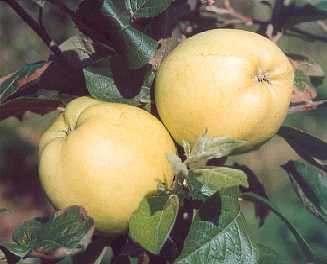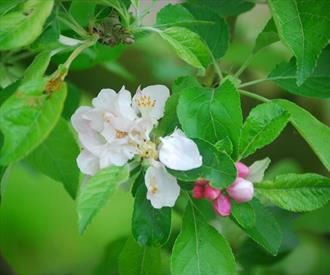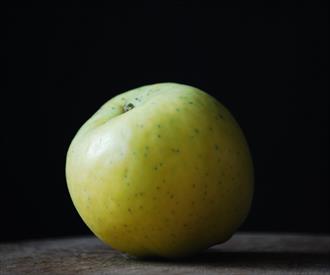Autumn 2025 / Winter 2026 seasonWe still have plenty of trees left for the winter planting season, but it is best to order ASAP.
Keepers NurseryThe UK's largest range of fruit trees
Tel. 01622 326465
Keswick Codlin
A very old traditional early season cooking apple producing a decorative tree with attractive blossom.
Origin: Lancashire UK, 1793
Pollination: Keswick Codlin is partially self-fertile and would produce some crop without a pollinator but would benefit considerably from a pollinator.Find pollination partners >
British-grown  All our bare-root trees are personally hand-grafted by our Nursery Manager and grown on at our nursery in Kent. We have Defra and Plant Healthy certification.
More ...
All our bare-root trees are personally hand-grafted by our Nursery Manager and grown on at our nursery in Kent. We have Defra and Plant Healthy certification.
More ...
History and description of Keswick Codlin
A very old Northern English variety which according to Robert Hogg in his The Fruit Manual was found "growing among a quantity of rubbish behind a wall at Gleaston Castle near Ulverstone" in Lancashire. It was introduced c 1790 by a Keswick nurseryman called John Sander, who named it Keswick Codlin. It was one of the most popular early cooking apples in Victorian England and was grown commercially in Kent and around London up until the 1930's.Typical long and angular codlin-type fruit. Medium sized. Conical oblong, ribbed shape. Pale green skin ripening to pale yellow. Occasionally a slight dark yellow or orange flush. Often has a distinctive raised russet hair lines running from the stalk to the apex. Soft, juicy, cream coloured flesh. Pleasant refreshing, sharp taste. Cooks to a cream coloured juicy froth needing little added sugar. Good for jelly making.
Moderately vigorous tree. Partially self-fertile. Prolific cropper but with some biennial tendency. Very attractive blossom. Hardy and suitable for growing in Northern Britain.
Characteristics of Keswick Codlin apple trees
| Use | Culinary |
| Colour | Yellow |
| Flavour | Subacid |
| Fruit size | Medium |
| Picking time | Mid/Late Aug |
| Season of use | Aug-Sep |
| Tree vigour | Moderate |
| Tree habit | Upright-spreading |
| Fruit-bearing | Spur-bearer |
| Cropping | Heavy |
| Suitable for | Northern Britain |
| Special features | Attractive Blossom |
| Pollination date | 5 |
| Pollination group | B |
| Self-fertility | Partially self-fertile |
| Pollinators | Pollination partners |
| Progeny | Early Victoria |
Varieties you viewed


